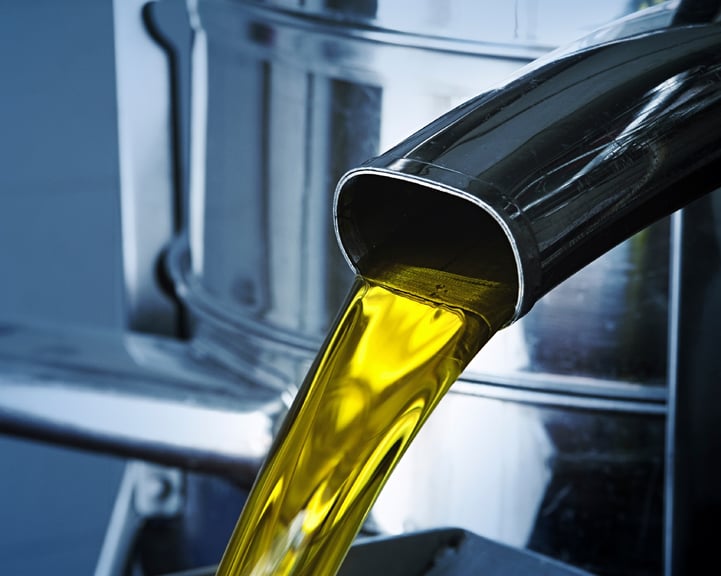
What’s the truth? There’s so much hearsay that gets thrown around related to olive oil these days, because it’s such a hot button topic.
In this article, I’ll honestly answer both the classic and the obscure myths, and try to shed some objective light on the matter. Does olive oil get better with age? Does heat destroy the health properties? Does the “fridge” test work? Is Extra Virgin that much healthier than other grades of olive oil?
I’ve got some real answers for you.
Like Wine, Olive Oil Gets Better With Age
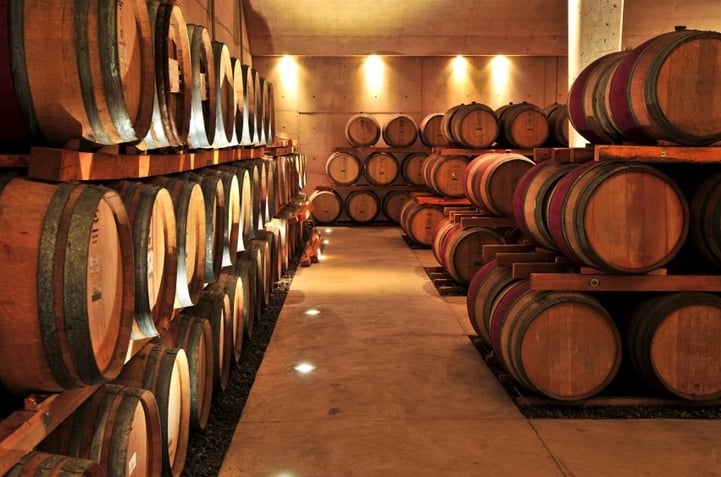
Olive oil does NOT get better with age! Over time, olive oil slowly breaks down, as light and air get into the oil.
All oils, not just olive oil, will deteriorate over time — so they’re definitely the opposite of wine. To maintain quality, store your olive oil in a cool dark place and use the oil within a few months once the bottle or container has been opened.
Heat Diminishes Olive Oil’s Health Benefits, So Use It Cold
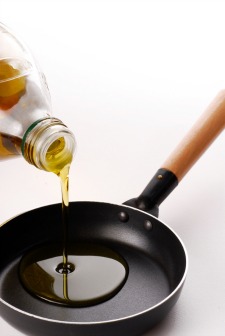 Adding heat to olive oil doesn’t change the lipid makeup of the oil — it is still an oil that is high in monounsaturated fats and low in saturated fats. So in this sense, it doesn’t diminish the health properties, because the oil is intrinsically healthy.
Adding heat to olive oil doesn’t change the lipid makeup of the oil — it is still an oil that is high in monounsaturated fats and low in saturated fats. So in this sense, it doesn’t diminish the health properties, because the oil is intrinsically healthy.
On the other hand, EVOO has special health benefits that make this oil so legendary. The polyphenols found in high quality oils are antioxidants and properties that fight diseases like cancer and Alzheimers, and do lots of other great things for the body.
It’s never clearly discussed if the polyphenols are destroyed in heat, so I searched out some scientific research studies: “Evaluation of the influence of thermal oxidation on the phenolic composition and on the antioxidant activity of extra-virgin olive oils”. You can read the exact excerpt below, but the long and the short of it is this: some of the polyphenols are destroyed when the oil is heated, and some of them aren’t.
“A comparison between the results obtained by using HPLC-UV, HPLC-MS, and CE-UV for characterizing the deterioration of extra-virgin olive oil during heating (180 degrees C) was investigated, taking into account phenolic compounds. The concentration of several compounds belonging to four families of phenols (simple phenols, lignans, complex phenols, and phenolic acids) was determined in the samples after the thermal treatment by all three techniques. Hydroxytyrosol, elenolic acid, decarboxymethyl oleuropein aglycon, and oleuropein aglycon reduced their concentration with the thermal treatment more quickly than other phenolic compounds present in olive oil. HYTY-Ac and Lig Agl were demonstrated to be quite resistant to this kind of treatment, and the behavior of lignans could be outstanding, as they belong to the family most resistant to thermal treatment.” Source
Extra Virgin Olive Oil Is The Only Healthy Type Of Olive Oil
Depends on how you define healthy. It is the MOST healthy type of olive oil (when compared to Pure Olive Oil or Olive Pomace Oil) but don’t get me wrong, you’re choosing the number one out of the top 3 healthiest oils.
All olive oil is healthy, because it’s high in monounsaturated fats, has a limited level of polyunsaturated fats (important in small levels) and is low in saturated fat. So it all meets the qualifications. But here’s the catch.
Extra Virgin Olive Oil has healthy polyphenols and other health benefits that are completely unique and only found in “superfoods”. These antioxidants help fight cancer, alzheimers and other diseases. So Extra Virgin is EXTRA good. These polyphenols are rarely found in oils, so it’s a special thing.
Pure Olive Oil is very similar to Expeller Pressed Sunflower or Safflower Oil… It’s got a high level of monounsaturated fats, it’s expeller pressed and it’s refined using high heat.
Olive Pomace Oil is very similar to class sunflower oil — it’s got a good amount of monounsaturated fats (though olive oil actually wins on this front) and it’s a solvent expelled oil, like most of the oils on the market are today.
Light Olive Oil Is Lower In Calories
Sorry, big myth here! All oil has just about the same amount of calories — 120 per tablespoon. The name “light” olive oil comes from the color and flavor. This is another name for “refined” olive oil in the manufacturing world, which means that the oil is very “light” in color and flavor in comparison to Extra Virgin Olive Oil.
Green or Dark Olive Oil Indicates That It’s High Quality
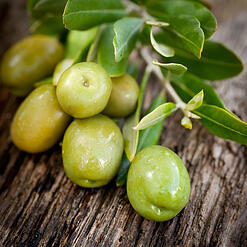 I wish! If color was really an indicator of quality, all of us in the olive oil realm would probably have it a bit easier. Unfortunately no, color has no bearing on the quality of the oil.
I wish! If color was really an indicator of quality, all of us in the olive oil realm would probably have it a bit easier. Unfortunately no, color has no bearing on the quality of the oil.
Color actually comes from the type of varietal and how ripe the fruit was when it was produced.
High quality oils come in all colors.
“Don’t pay much attention to the color of an oil. Good oils come in all shades, from vivid green to gold to pale straw,” Tom Mueller writes in his book, Extra Virginity.
“The Fridge Test” Can Authenticate Olive Oil
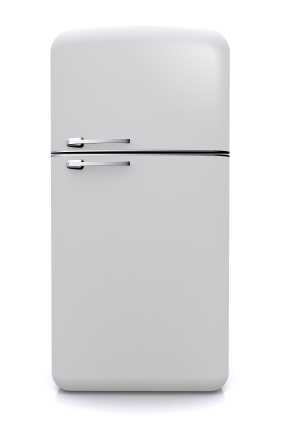 Unfortunately, this is wrong too. The notion of the refrigerator test was popularized by Dr. Oz, and goes like this: if you put olive oil in the fridge and it solidifies, it is real. If it doesn’t solidify, it’s not real.
Unfortunately, this is wrong too. The notion of the refrigerator test was popularized by Dr. Oz, and goes like this: if you put olive oil in the fridge and it solidifies, it is real. If it doesn’t solidify, it’s not real.
I wish this one were this simple too. Tons of us in the industry have hoped for an easy home test like this and everyone — on all side of the spectrum — have nay-sayed it. Sorry, it doesn’t work. Here’s why.
This theory was developed because of the chemical profiles in monounsaturated and polyunsaturated fats. Oils high in monounsaturated fats (like Extra Virgin Olive Oil) typically solidify below 39.2˚ F (4˚ C).
On the other hand, oils high in polyunsaturated fats (like Linoleic Sunflower Oil) solidify in temperatures below -22˚ F (-30˚ C). Therefore, it is suggested that if an oil high in monounsaturated fat like EVOO doesn’t solidify in the fridge, then it must be adulterated with a polyunsaturated fat that prefers to remain in a liquid state. This premise has been proven inaccurate with some intense ferocity from all sides of the olive oil world.
Olive Oil tasting expert Richard Gawel recently called this test a “myth” in his blog. This is because there are only a few oils that are very high in only monounsaturated or polyunsaturated fats like the examples above. In reality, most oils are comprised of a bit of both: for example, both Peanut and Canola Oil both contain 50-60% of the monounsaturated fat, and can also solidify in the fridge.
The UC Davis Olive Center recently evaluated this fridge test, and also found that it was an unreliable indicator of olive oil quality. In their findings, it was clear that if Extra Virgin Olive Oil had been mislabeled and mixed with up to 50% of a lesser olive oil grade (or even 10% of a cheaper oil like Canola) it may still solidify in the fridge. Many of their adulterated samples passed the supposed “fridge test”, proving the theory inaccurate again.
Topics: Olive Oil












